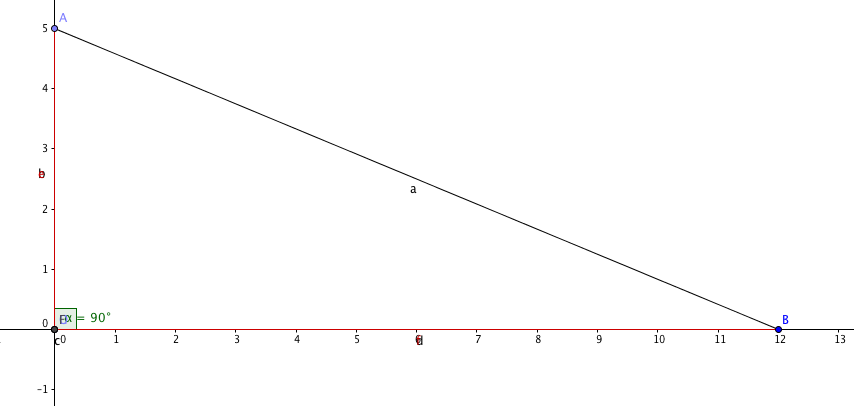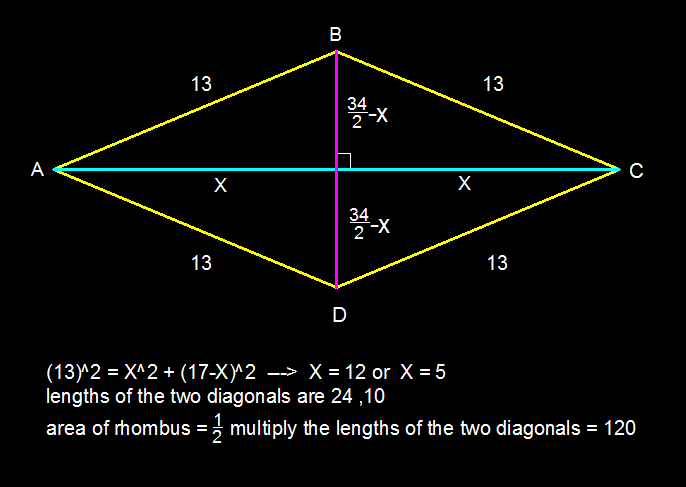Weird square
In a regular rhombus A B C D , A C + B D = 3 4 . A B = 1 3 . Find area.
The answer is 120.
This section requires Javascript.
You are seeing this because something didn't load right. We suggest you, (a) try
refreshing the page, (b) enabling javascript if it is disabled on your browser and,
finally, (c)
loading the
non-javascript version of this page
. We're sorry about the hassle.
2 solutions
In a regular rhombus all sides are the same length.
The diagonals of any rhombus are perpendicular.
 By having perpendicular diagonals (
9
0
º
) and same length sides, we see that 4 right triangles with hypotenuse 13 are inscribed.
Lets name each cathetus
a
and
b
, then
a
=
b
because if they were equal, our rhombus would be a square.
a
=
b
,
a
2
+
b
2
=
1
3
2
=
>
a
2
+
b
2
=
1
6
9
The only positive values that can be
a
and
b
are
a
=
5
or
1
2
and
b
=
5
or
1
2
We know
2
a
=
A
C
and
2
b
=
D
B
The area of a rhombus can be obtained by the product of its diagonals divided by two.
Thus,
A
C
∗
D
C
∗
1
/
2
=
1
2
0
∴
A
r
e
a
=
1
2
0
By having perpendicular diagonals (
9
0
º
) and same length sides, we see that 4 right triangles with hypotenuse 13 are inscribed.
Lets name each cathetus
a
and
b
, then
a
=
b
because if they were equal, our rhombus would be a square.
a
=
b
,
a
2
+
b
2
=
1
3
2
=
>
a
2
+
b
2
=
1
6
9
The only positive values that can be
a
and
b
are
a
=
5
or
1
2
and
b
=
5
or
1
2
We know
2
a
=
A
C
and
2
b
=
D
B
The area of a rhombus can be obtained by the product of its diagonals divided by two.
Thus,
A
C
∗
D
C
∗
1
/
2
=
1
2
0
∴
A
r
e
a
=
1
2
0
Moderator note:
You should not be making the assumption that a and b are integers. There are many more positive solutions to a 2 + b 2 = 1 6 9 , like a = 1 0 , b = 6 9 .
